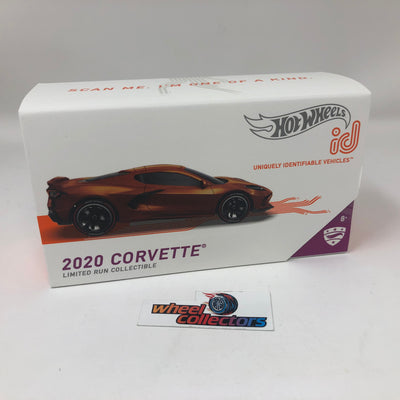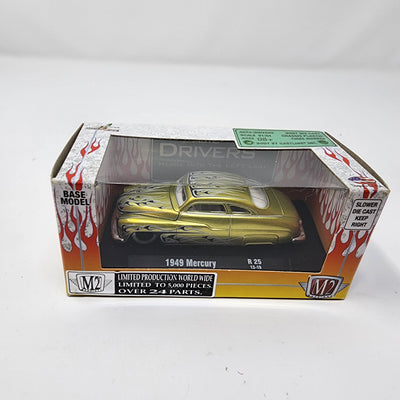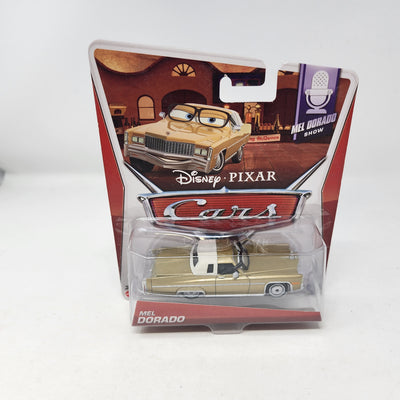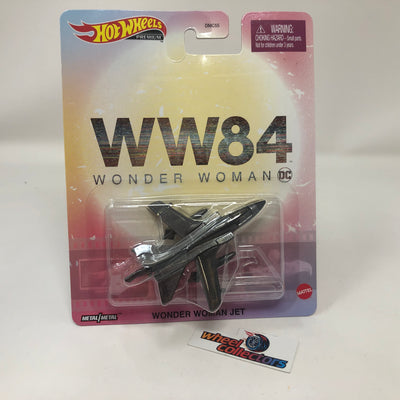Matchbox Monday dive back into the past V

For anybody who is unaware, the latest Matchbox European Convention has just finished in Leipzig, in Germany. As has been the case for a few years now, Dirk Schleuer has set up another auction that anybody can enter. Auction C consists of 10 lots, and all the details are over on the Lamley Group webpages. Dirk will also be showing them on his Instagram page, and will be emailing all entrants over the course of the week with updates, and also showing off the updated bids on his Instagram page. It began on Sunday, and will finish this coming Sunday at 2pm, Berlin time (that is GMT+2 so you can adjust it to your time zone). I might be making a few bids myself. There are some cool items in there. Now, normally, I would use this opportunity to do a run down of the promotional models that Dirk had for the show. Sadly, not everything arrived in time for him to send to me, and be prepared for this blog. So, I will be hopefully receiving a lovely package from him during the week, and will be going through these awesome models on next week's blog. Fingers crossed. I do have a backup in case it doesn't arrive in time. There is never a guarantee with postal services.

But, I decided, I would keep a German theme going this week, and prepare another dive back into the past. I have chosen 5 German vehicles from the past of the Matchbox brand (Lesney Superfast to Mattel), and not remembering if I did any before, I will showcase these now. Apologies if I have done some in the past. I honestly have no idea which ones I have done dive backs into. I hope you still enjoy the blog.

First up, I thought I would do a run through of the MB12-B Setra Coach. Setra was set up in 1951, and was an abbreviation of the German word SElbstTRAgend. Selbsttragend is German for self-supporting, and this was because Karl Kässbohrer Fahrzeugwerke GmbH, an earlier company set up a new coach company to build coaches using a new self-supporting system, as most coach and bus manufacturers at the time built separate chassis and body parts. The first series of coaches was launched in 1951, and each coach was simply marked as "S" with a number after denoting the rows of seats. 6 rows would be S6, 8 rows S8, and so on. The second generation, which launched in 1967, was internally known as the S100 series. However, models were simply sold using "S" again, followed by the amount of rows, but now with an added "0" at the end. The shortest of these was the S80. It featured 8 rows. The longest was S180. When Lesney created their own casting, even 8 rows was a little long, so just cut it down. There are only 5 rows in there. There is no such thing as an S50. But, this was the 1970s, and artistic licence was freely used. The model debuted in the 1971 basic range in the MB12 slot, replacing the older Land Rover Safari casting. However, daft fact, was still being painted the same shade of gold. It came with an ivory interior, a white plastic roof and clear windows. The front grille was a separate piece that was riveted to the front.

As a general rule, all roof pieces are white. However, over time, many have faded to more creamier looks. However, some feel that the early gold models did sport a greyish tan roof as an original build. These have been catalogued.

During 1972, the model changed to a sold yellow colour. By now, all roof pieces were definitely white, and the rest continued on as before. These 1972s are not the easiest to find, as it was fairly late in the year when they changed (things didn't happen on 1st January each year), and the model was changed again fairly early in 1973.

The model turned magenta, and they also changed the windows from clear to green. Now, there are crossovers for these. The last yellows can be found with green windows, and the first magentas can be found with clear windows. However, this model has a simple slot construction for the roof. If you are careful, you can pop off the roof and switch a window section. Therefore, finding a yellow with green window, or magenta with clear window, is not deemed a high value rarity. Somebody can just take the 2 models and carefully swap them over. So, yes, they are rare. But, whatever you do, don't spend a lot of money to get one. It could have been doctored at a later date. I like to give advice occasionally.

The magenta model ran for 2 years. The longest of any of the Setras. However, this was Lesney, and magenta paint or purple paint? They are close enough. Various shades can be found during the 2 years or so of production. During 1975, the model was replaced by Big Bull. An original design Bulldozer.

Since 1995, Setra has been owned by Daimler Trucks. They are still going strong. I often wonder if one day we will see another Setra being made by Matchbox?

I am barely moving forward, as I move from 1970 to 1972 for my next model. Flying Bug. Debuting as MB11-B, it replaced the Mercedes-Benz Scaffolding Truck in the range, and saw Lesney's foray into the more fantasy realm. Many fantasy vehicles were based on something real, and this is one of 4 proposed castings that were based on older traditional vehicles that Matchbox had made, but only 2 of them came to fruition. A "British" Mini Ha-Ha also made it, but a "French" Citroën DS based model and "USA" Jeep based model never got beyond prototype stages. Flying Bug was obviously a VW Beetle, but now modified. With a beetle being a bug, and bugs are known to fly, they added huge wings on the rear, as well as what look like little rocket boosters. A large oversize head came out the top of the model. It was sold for 5 years in the basic range, and always came in metallic dark red. But, this was the Lesney era, and things can change. For example, early runs had a very simple 4-sided label on the front.

By the end of the first year, this had been changed to a butterfly shaped label, that better fitted the detailing of the front end of the Bug. 4-sided labels are much harder to find, as they were sold for less than a year, and the butterfly had over 4 years of production.

Most models sported 5-spoke wheels front and rear. However, some did pop up with 4-spokes on the front.

Also, most windows are grey. However, circa 1974, a batch was made with blue windows. Please note, this particular blue plastic can fade to a more greenish hue, and is not classified as its own variation.

So, there are variations to look for. You could even find one with a silver painted base. Most are unpainted. I never picked one of those up. Shades of red can be found, and the 5-spoke front wheels do have 2 styles. Some are more rectangular in shape for the spokes, the others more square. I don't tend to worry too much about that. I am happy with this little quartet myself.

After 1976, the model was dropped from the basic range. However, in 1978, the model popped back as a Roman Numeral Limited Edition in the USA. Being a limited edition, the model never sported any variation (unless you happen to stumble upon an error where they forgot to tampo print the bug on the front).

As was the case with all the Roman Numeral set, this model was given a new name, and the base had a tab placed over the old name and number, with the new Roman Numeral number and name placed on it. It was now no. IV Flying Beetle. Yep, they really went nuts with the name change on this. Flying Bug - Flying Beetle. Radical. After this, the model was retired for good. The other fantasy model with oversized head, the Mini Ha-Ha, carried on until 1980 (US) and 1981 (ROW).

I'm sticking with the Beetle theme for my next model. The MB119 Sand Digger was created in 1983 under the Universal ownership, due to work on new castings grinding to a halt in late 1982 as the Lesney company were collapsing. When they took over, work began again, but with time needed to continue working on new castings, some older castings were modified to create something "new" without all the work involved in making something from scratch. Sand Digger was basically the older Hi-Ho Silver with a few modifications, itself just being a renamed VolksDragon from 1971. This was enough to give the illusion of something new, and in turn gave the Matchbox brand their first casting of a 4x4 VW Beetle. There have been 2 further 4x4 Beetles since, the first being modifed during production (given a new MAN number), and the second one still going strong. Sand Digger arrived as MB49 in the basic range worldwide in 1983, and came in green with Sand Digger scrawled over the front, and a wheeled bug wheel-spinning across the side.

The debut green look ran for the 2 years, and if you looked around, you might find shades to the green paint.

As with all VW Beetle based castings at the time, the base made no mention of the VW origin. But, as this was called Sand Digger, the fact that they changed the tampo printing in 1985 made it rather confusing.

Because in 1985, the model turned red, and said Dune Man on the sides, and had a cattle skull motif on the front. Yet, the base still said Sand Digger. It did make things a little confusing.

Early examples used up leftover white interiors from the green 1984 model, but this soon switched to a brown interior.

This particular look ran for 2 years. After this, the model was dropped from the basic range. However, what people noted was that during 1986, certain multipacks were still including it. But, this looked very dark. There is a reason.

These multipacks were being made in China. So, this model actually moved to a new factory after it was dropped from the basic range for a little further use.

This was not the end of the casting. Enter Bulgaria. Over the course of a decade, a company in Bulgaria had a deal with Universal to use some older castings. At first, these were leased on a yearly basis. The first 3 sets were all sent back. After this, a new deal was struck where they didn't have to send the tooling back. 3 further batches were set up, with the final batch of castings arriving at the start of 1993, just after Tyco had taken over. The deal was honoured, but no further castings were sent over. The Sand Digger was a part of this final batch. Early models saw them attempting to recreate the Dune Man look of the previous Universal made model. A little more basic in design, but it still worked. However, they didn't really have wheels to suit. So they enlarged some other wheels to better suit the model. This red Dune Man sports dot-dash wheels, but in a bigger size than we are used to.

The base was very simplistic. A Matchbox logo and Made in Bulgaria on a plastic base section. That was it. No other detailing at all.

Since this was a later Bulgarian batch, they kept the casting, and over subsequent year, rolled out so many different variations. Plain models, different logos, flames, writing, you name it. They probably did it. I could attempt to get them all. I would be bankrupt. I decided to stick with a simple sample group of the early Dune Man runs. Maybe one day I will add another, but for now, I have 3. The red is joined by a cream and a green. You might notice that those 2 had even larger wheels, with 5-arch design. With no guide to work from, the factory were playing guessing games with how much to enlarge a wheel. Good luck if you want to attempt a large Bulgarian collection of this one.

Prepros. I do love a prepro. My next model is the MB181 Mercedes-Benz 300E. I absolutely loved this when it arrived in 1987. It debuted in the basic range as MB58 and ran for 4 years worldwide. However, during that time, it only came in blue. So, I took an opportunity to obtain a couple of prepros in silver.

Both came from Macau, but one is plain silver, with the other sporting some side design. A lower black stripe along the bottom is easily missed, as you tend to notice the mid-height stripe only. Now, these are not early prototypes. They are later examples with possible colour change ideas. But, as I said, they were always sold in blue until 1990. So, why are these later prepros? Notice the Mercedes-Benz tri-star sticking up from the grille?

When the model debuted in the 1987, the grille did not have a tristar sticking up from it. You may notice that this also had the black lower side stripe. I bet people never really noticed that it had that on it.

During its time in the range, the model could be found in shades of blue. These are both from 1987 or early 1988 due to the lack of tristar.

The tristar itself was only added during 1988 production. First examples started showing up in the summer of 1988 with the tristar.

At this time, production was still in Macau. It ran until the factory closed at the beginning of 1990.

When the factory closed, the tooling was sent over to Thailand to continue. After 1990, the US market decided to drop the model. However, ROW market continued on with a new look.

For 1991, the ROW market changed the model to a white Polizei vehicle. During the first year, the model sported a star on the door tampo.

This was altered in 1992 to simply state Polizei. This is how the model continued to be sold until 1995, after which time, the ROW market also dropped it from their range.

However, there was a further change. Do you notice it? It happened in the last year of production. Yes, these 2 look very similar.

The real difference was underneath. During 1995, Tyco decided to start re-purposing the Thailand factory into making other products, and slowly started moving Matchbox out, and into a China factory. This was not an overnight process, as models were still being made in Thailand as late as 1998. But, the Merc was shipped in 1995. Mattel moved everything back to that Thailand factory in 2005 and 2006, where models are still being made to this day. After 1995, the model was dropped from the basic range for good. However, this is not the entire story.

As, for starters, I did miss a random multipack appearance. In 1993, An EM-70 set was made, with a Dutch Rijkspolitie theme. The Merc was included in this set.

One was a random Chinese error model. Made using leftover parts of models, and with a quick Polizei print added front and rear in white (using the design from the 1995 model, but switched in colour). However, blue?

The blue body was actually from a short run promotional item from Australia. In 1997, they made a set of 8 "Footy Cars" for the Australian market. This was the model for the Carlton Blues Australian Football Team model. Go Blues! After 1997, the model was retired for good.

Which brings me to my last model. Well, I had to get a Porsche in somewhere. This was the first Porsche that was made under the Mattel umbrella. The MB335 Porsche 911GT1. The real car was created by Porsche to compete in the GT1 World Championships. However, for homologation, they were required to build 25 for road use. The Straßenversion, as it was called, was mainly made in either silver or white. There was 1 red and 1 yellow. However, Matchbox weren't all that fussed over making sure to follow the 4 colours. However, at first, they were pretty normal. The debut was in the 1998 basic range, where it debuted in the US range as MB68 or the ROW range as MB58. It came in white, with a simple 911GT1 print down the side.

However, if you were really observant, you might notice that the tampo print could be found in various shades of blue.

For 1999, the model was dropped from the US range. However, the ROW range did not include Germany that year. They created a large selection of exclusive items, some brand new castings. The Porsche was given a new look on the side of the silver MB33 ROW, but in Germany, although still silver, it simply sported the same design as the previous year.

For 2000, the model was back in the US range. It came in yellow as MB45, and if you lived in the USA itself, the first 10,000 made would sport a Matchbox 2000 logo on the front window. The ROW market (including Germany) had a blue model in the MB35 slot. Both featured the same side design as the original 1998, however, the blue also saw some headlights depicted. During this year, ASAP was given a blank white model with a white interior. Weirdly enough, I have not picked one up yet. I had better get on with that.

But, what I did get was the Euro Sports 5-pack in plain red with headlights depicted. As this 5-pack was entering production late in 2000, it was still being produced when 2001 arrived, and a new Mattel created flower design wheel debuted. Late runs switched from the earlier concave 5-spoke to the new wheels.

They do like their blue, considering the Straßenversion was never made in blue. Again, the model was dropped from the US range. For good now. The ROW market continued to sell it, and this blue model, featuring the new Matchbox logo (at the time, it switched back a few years later) prominently on the front. It was MB20 that year.

It continued in 2002 Now MB22, the first 10,000 sold were given a 50 logo, before the rest saw it removed. There is a variation.

And it is actually on the logo version. The first few sported lace wheels, before it switched to the flower ones. These may have been FEPs that were sent out anyway. It was common to do a tiny run of something, and if no issues, just carry on and mix them in. They may have done this tiny run, then decided to switch the wheels for proper production.

For 2003, the model was now dropped from the ROW range as well. However, there was 1 issue. In Germany, the Stars of Germany series was given a second outing (before it changed to Stars of Cars in 2004, as it expanded beyond German cars), and this plain silver was one of the models in the 2003 set. Quite a few of the SoG models that year had no tampo printing.

For 2004, the model returned to the ROW basic range for one more outing. Now in dark red, it featured the same side design as the 2001 and 2002 models, but the front logo was deleted. After this, the model was never seen in ROW markets again.

However, there was 1 more outing left. And this one was exclusive to the USA. With sales of the Collectables series fading, Mattel came up with a new idea for a more premium content. Superfast. A full set of 75 models, each one a licenced vehicle, and each coming in a blister with a box. After all, 2004 was the 35th anniversary of the Superfast range. It was late to start, only launching in summer that year. Which, funnily enough, is not far off when the original Superfast launched, as it was later in 1969. Each model was limited to 15,000 examples, and this first series was only sold in the USA. Due to the late start, the series actually ran from summer 2004 to spring 2005, and the Porsche was in one of the last batches. So, although catalogued as a 2004 model, it actually turned up in early 2005. After this outing, the model was dropped and never seen again.

Well, I hope you enjoyed my little rundown of some classics. As I said, next week could go one of 2 ways. I either show the promotional models from this year's Leipzig convention, or I will be showing off some more items that Wheel Collectors have sent over. It is going to be a fun week trying to decide which it will be. Until then, I hope everybody has a safe and happy week.













They are really nice looking models,I have them they are great
Hello David. Thank you for the latest retrospective. I recognize every toy you discuss. My favorite has to be the Setra Coach. Matchbox made (and continues to make) many different types of vehicles but they are particularly noted for buses. I own the gold and magenta versions of the Setra and now I know why I’ve never found a yellow example. And thanks for the factory location history. Matchbox’s odyssey from England to Macau, to mainland China, to Thailand is not a neat and simple one. I wish it could be cost effective to manufacture in England once more but I know that will never happen! As a little boy it was always fun to read the baseplate and see “Made in England.” That just seemed like the natural order of things.
Leave a comment